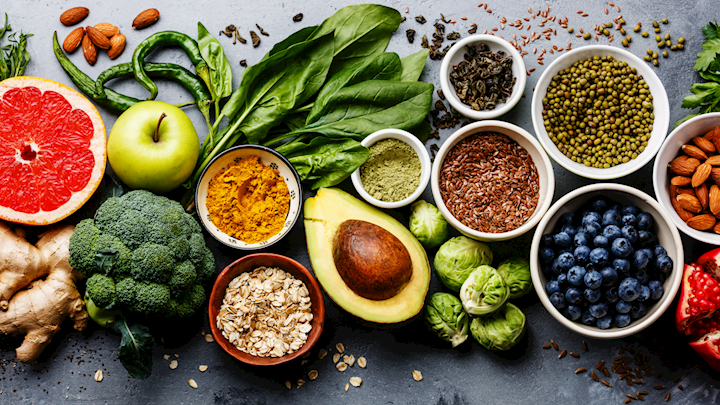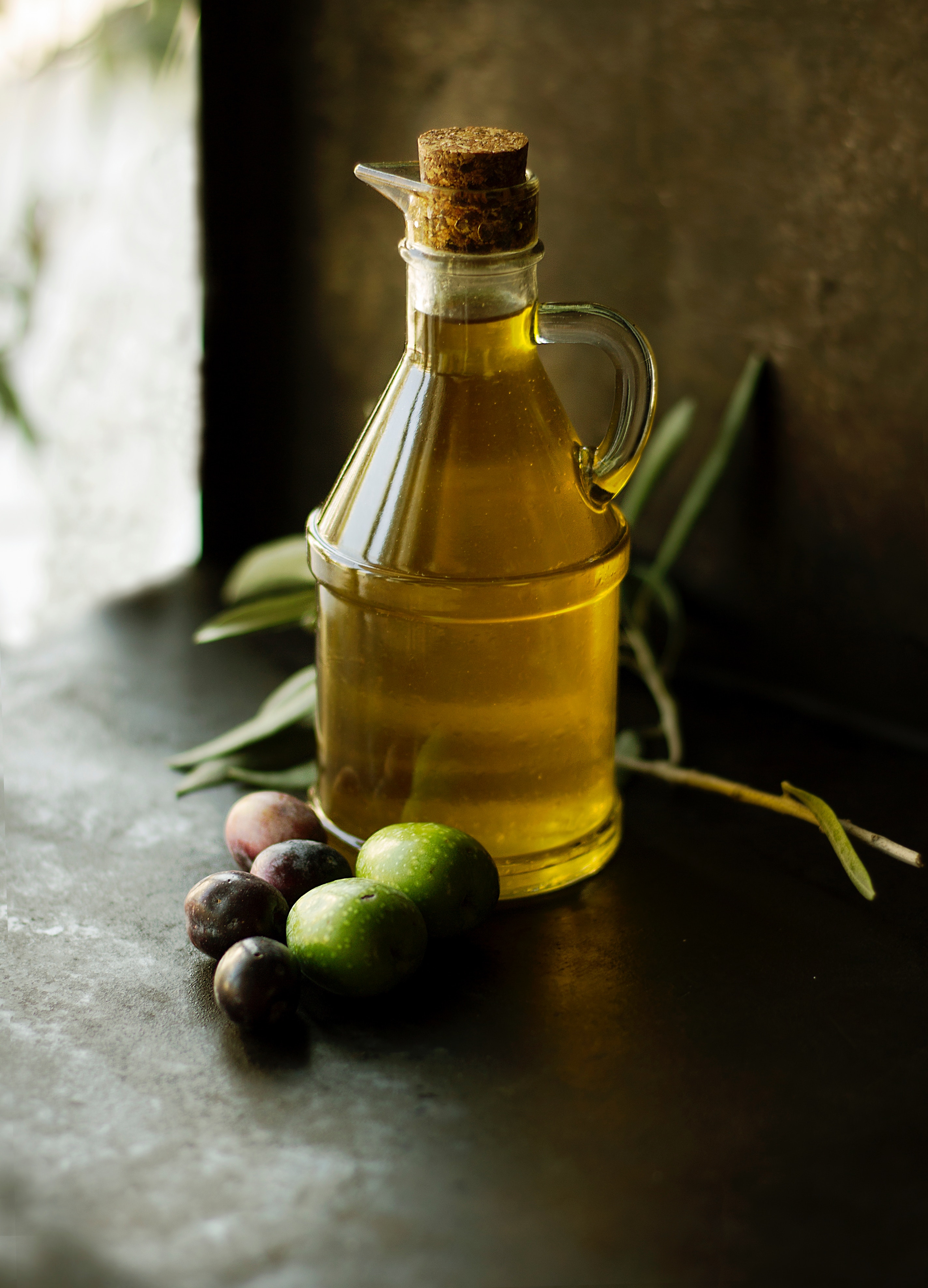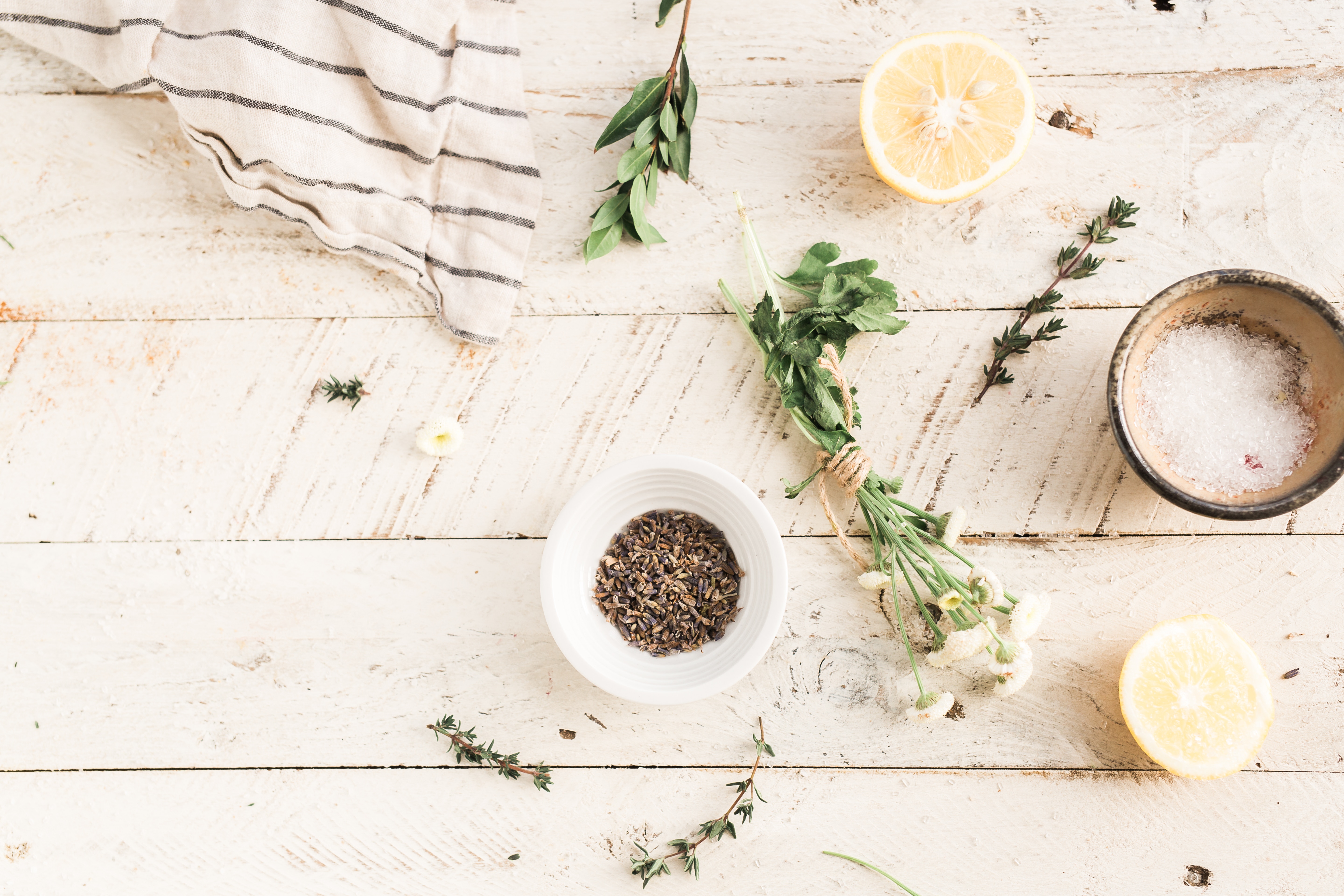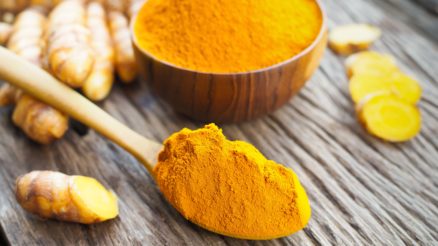The word superfood has no actual official definition however we hear the word and read about it everywhere in the media. It is actually a marketing term that is used to describe a food that has apparent health benefits. Some fad diets promote eating just superfoods however this is not sound nutritional advice.
That said, superfoods are excellent nutrient sources as well as having other health benefits. Here are sixteen of them that are worthy of being on our list:
1. Chia Seeds
Chia seeds are becoming increasingly popular as a growing number of people become aware of their benefits. For centuries, chia seeds have been a staple in Aztec and Mayan diets. Chia seeds are rich in polyunsaturated fats, especially omega-3 fatty acids. Chia seeds are one of the richest plant-based sources of alpha-linolenic acid (ALA). Fatty acids are essential for cognitive function and good brain health. The seeds are also high in fiber. Chia seeds contain tryptophan, an amino acid that helps regulate appetite, sleep and improve mood.
Chia seeds are a wonderful substitute for eggs if you want to make any of your baking recipes ‘vegan.’ When mixed with water, chia seeds swell up and a gel-like mixture is formed. To make a replacement for one egg, mix 1 tablespoon of chia seeds with 3 tablespoons of water and let it sit for about 5 minutes. Alternatively chia seeds can also be enjoy by sprinkling over any of your meals, oatmeal, salads, curries, and more.
2. Green Tea
Green tea is said to be one of the healthiest teas in the world (possibly the healthiest tea). It has been consumed for centuries in India and China. Green tea is nutrient dense and loaded with antioxidants. Its many health benefits include but are not limited to – improved brain function, aiding in weight loss and fat burning, may lower risk of type 2 diabetes, may lower risk of heart disease and some research even indicates that it may help you to live longer.
3. Raw Cacao
Most of us are familiar with cocoa powder but raw cacao is the healthy, unprocessed form of cocoa powder. Both cacao and cocoa are derived from the same tree. However because cocoa powder is much more processed most of the health benefits are lost in this process. Raw cacao is available as both a powder and in crushed ‘nibs.’ Both can be used in smoothies, oatmeal, brownies and energy balls.
The powder has numerous health benefits. Raw cacao is the highest plant-based source of iron and thus supports healthy blood and helps with oxygen distribution throughout the body. Raw Cacao is also rich in antioxidants as well as calcium. It supports a healthy heart and is said to be a mood enhancer.
4. Ginger
The ginger plant’s root or rhizome is commonly used as a culinary ingredient. It can be dried into a spice, used fresh, juiced, powdered or even made into oil. There are various health benefits of consuming ginger including reducing nausea, pain and inflammation. Breastfeeding mothers commonly drink ginger tea to help increase their milk supply. Besides this ginger tea is said to help with digestion and nausea.
5. Wheatgrass
In recent years every juice and smoothie bars has added wheatgrass ‘shots’ to their menu. Just where does wheatgrass come from and what are its benefits? Wheatgrass is basically just the sprouted leaves that come from the common wheat plant. Several parts of the plant are used in medications. It is packed with nutrients like Vitamins A, C and E as well as iron, calcium, magnesium and amino acids. Research suggests that wheatgrass may help to reduce cholesterol and maintain blood sugar balance. It also thought to help kill cancer cells. It is easy to add to your diet, as it is available in various forms including capsules, powder, pills and tables. It can also be juiced.
6. Goji Berries
Goji berries or Lycium barbarum is a berry that is native to Asia. For a few thousand years, these berries have been used in Asia as a medicinal herb and food supplement. Goji berries have recently been appearing in the media and promoted as a superfood. The benefits of goji berries include – protection for the eyes, immune system support, regulating blood sugar and boosting healthy skin.
7. Coconut Water
The flesh, water and milk from coconuts are all edible. In recent years, coconut sugar and flour have also become readily available in the retail market. Coconut water has a string of benefits – it is nutrient dense, high in antioxidants and helps to treat blood pressure. It is also a great hydrating agent. Many people drink coconut water in place of sports drinks as it helps to replenish electrolytes lost during exercise.
8. Kefir
A fermented milk drink, kefir is gaining popularity across the globe in recent years. Kefir grains are gluten-free and taste similar to yogurt drinks. Most of kefir’s benefits are from its probiotic (or good bacteria) content. Kefir is said to control blood sugar, aid digestive discomforts, boost bone health, and lower cholesterol.
9. Quinoa
Quinoa is a very popular gluten-free grain that has gained a lot of fame in a short span of time. It can be eaten alongside stir-fries as an alternative or substitute for rice. It also contains all nine essential amino acids making it a complete protein food. Besides this it is also high in fiber, nutrient dense and contains many antioxidants. Note that whenever cooking quinoa, it must be rinsed thoroughly to remove its bitter after-taste.
10. Blueberries
Most of us know blueberries as a delicious purple fruit. Its beneficial characteristics are not so well known. Consuming blueberries may aid in weight loss, fighting cancer, promoting a healthy heart and aiding in digestion. Besides this, blueberries are an incredibly high antioxidant fruit. Recent research also indicates that eating blueberries post exercise may help to reduce muscle damage.
11. Moringa
Moringa or Moringa oleifera is also known as drumstick tree, ben oil tree or benzoil tree. Many parts of moringa are in fact edible. It has been used for centuries in the Eastern part of the world to treat diseases. It is high in many vitamins and minerals including Vitamin A, B1, B2, B3, B6, folate, calcium, potassium, iron and magnesium. Besides being nutrient dense, moringa is also high in antioxidants, helps to regulate blood sugar and helps to fight inflammation. It is also said to help lower cholesterol thus lowering the risk of heart disease.
12. Kale
Kale is said to be the healthiest of all the green leafy vegetables. It is one of the most nutrient rich plant foods known to man. It is rich in vitamin C and contains many antioxidants. It is also high in Vitamins A, K and iron. Kale is simple to cook and add into your daily diet. It can be drizzled with olive oil, sprinkled with some spices and baked into chips. Kale can also be added into pastas, tossed into salads or blended into smoothies.
13. Avocado
The avocado fruit is essentially a large berry that contains a single seed. The avocado is a creamy fruit without much of a taste however, when used as an ingredient in recipes can yield a delicious meal. This simple tasting fruit has many benefits. They are nutrient rich – with avocadoes containing even more potassium than bananas. They are also very high in oleic acid – a monounsaturated fatty acid. This makes avocadoes an ideal fruit to consume when trying to add good fat in your diet and trying to increase ‘good’ cholesterol. They are also high in fiber and antioxidants.
14. Flaxseed
Flaxseeds have been consumed for thousands of years however only recently have appeared in the spotlight as a superfood. Medicinally, only the seeds and the oil of the flax plant are used. To enjoy the full nutritional benefits, the seeds should be ground into a powder. They can be sprinkled over nearly anything – salads, smoothies, pastas, fried rice and other foods as well. Like chia seeds, ground flax can be made into a ‘flax’ egg by mixing one tablespoon of ground flax to three tablespoons of water and leaving it to stand for five minutes. The health benefits of flaxseed are numerous – they are high in omega-3 fatty acids, dietary fiber and contain high quality protein. They are also said to help control blood sugar, lower blood pressure and they help to keep you full for longer periods of time (which can help in weight loss)!
15. Sauerkraut
Made by fermenting cabbage, sauerkraut is a healthy probiotic food. The main benefit of sauerkraut is in improving digestion as it can help to reduce gas, bloating, diarrhea and constipation. It is also said to help improve symptoms related to inflammatory bowel disease. Sauerkraut is high in nutrients and fiber. It is also said to be anti-inflammatory and helpful in boosting immune function in the body.
16. Acai
Acai berries are small, round and black-purple fruits that grow on acai palm trees. The fruit pulp is usually either frozen or alternatively a bottled juice drink is made from the berries. Acai berries are rich in antioxidants which support a healthy immune system can help protect cells in your body against damage from free radicals. The berries are also high in fiber and will help regulate blood sugar. Acai berries are a good source of omega-3 fatty acids, which can help to improve cholesterol and keep you heart healthy. They are also high in calcium and will help to protect your bones, muscles and nerves.






